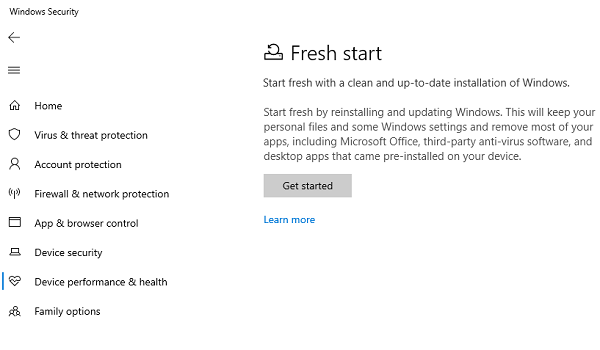Hurricane Harvey was a Category four storm that hit Texas on August 25, 2017. It caused billions in lost data damage to the residents of Texas. The total loss suffered was more than any other natural disaster in U.S. history except Hurricane Katrina.
How Data Recovery Impacts Businesses
Besides such disasters, software and hardware failure and human errors are the most common reasons for the data loss. Among all, accidental deletions due to invalid operations cause more data loss than a malware or virus (malicious) attacks.
Studies have found that businesses, especially Small and Mid-Size Businesses (SMBs) are the most affected due to data loss. The disaster to this size of a business is because they don’t generally have a systematic backup strategy and recovery planning in place. But you can change all that with your business.

According to a Washington based research firm—Clutch, 60 percent of small businesses that lose data are more likely to shut down within the next six months.
Therefore, it’s essential for you to know the eight things about data recovery as a business owner that will help you recover your business-critical data and maintain business continuity:
1. Plan a Backup Strategy — Now
As a business owner, you should have a proper backup plan.
One of the most-used backup plans is called the 3-2-1 backup. This critical business plan says:
- Create at least 3 backups, on
- 2 different storage drives, with
- 1 backup stored offsite.
The three backups – with one of those backups offsite — assures you of the ability to restore data in the event of a disaster — or in case one of your back-ups fails.
You can automate these backup tasks for better efficiency with regular checks in place. For instance, use the Calendar to add reminders for various backup related tasks. The app uses machine learning and thus, provides you with valuable information and feedbacks related to task reminders.
2. Create a Recovery Strategy
A well-planned data recovery strategy helps businesses to restore their workflow in the event of data loss, without affecting business continuity. Since backups are also stored in traditional hard drives, they are also prone to corruption and accidental deletion.
You can use a data recovery service or software in all such cases, as soon as possible. It comes handy when the backup is either obsolete or not available. A data recovery software such as iBoysoft Data Recovery for Mac can help you get back the lost files onsite in just a few clicks.
3. Backup Schedule
The frequency of backup must be based on data criticality and affordability. And there’s no debate on whether you should create and maintain a regular backup. The point is when and how. You should backup business database nightly. But in case some data is lost in between the backup cycle, use data recovery software and get it back immediately to prevent permanent loss or data corruption.
4. Test and Document Backups
Testing the backups and recovery plans is the most critical part of data loss prevention and data recovery. After creating a backup or implementing a data recovery strategy, test and rehearse by executing the recovery tasks and check if the system is working as intended.
Also, document everything about the backup and recovery strategy. This documenting will help keep business continuity even if the concerned person who created the recovery plan isn’t available.
5. Anti-Malware/Virus Protection
Ensure that there is antivirus and malware protection on every system – whether it’s a standalone system or the device is on the organization’s network. Reliable protection will secure users from potential web traps, malicious websites, and downloading unsafe content.
These tools also help in monitoring individual systems and protect drive as well as the data from corruption. The data recovery software we discussed in pointer number 2 can also repair corrupt photo and video files.
6. Fragmentation Obstructs Data Recovery
A fragmented drive’s platter has to rotate much more than a defragmented drive for accessing the chunks of data for the read/write operations. This fragmentation can cause a hard drive to overheat, resulting in permanent drive failure and data loss.
Further, the disk usage also increases, which may cause the system to slow down during the data recovery process.
Use defragment tool provided in Windows and keep the drive optimized. Also, run scheduled CHKDSK scan to keep drive healthy.
CAUTION: NEVER RUN DEFRAGMENTATION TAKS AFTER DATA LOSS. IT WILL OVERWRITE THE LOST OR DELETED DATA LEADING TO PERMANENT DATA LOSS BEYOND RECOVERY.
7. Stop Using the Storage Media and System after Data Loss Incident
The most crucial step for data recovery is to stop using the storage media or the PC after data loss. Doing so prevents data overwriting that otherwise can permanently destroy the lost files beyond recovery.
However, if you must use the system or the drive, restore the data using the backup or clone/image the hard drive. You can use a tool like Drive Monitor available in Stellar Data Recovery Premium software.
8. Staff Training
Educating employees about data safety Do’s and Don’ts in any organization plays the most vital role when it comes to data loss prevention and recovery. Human errors being the most common reason for data loss can be prevented by educating the staff about data security and ingraining a better understanding of their active role in data protection.
Conclusion
Think of data backup as a crucial need for business continuity, which enables you to reinstate business with minimal downtime in the event of data loss. Remember the eight important pointers we shared in this post about data care, and safeguard your business against the worst case scenarios of data loss.
Also, implement right backup technologies and recovery planning—such as the 3-2-1 backup and a data recovery software—to combat all types of data loss situations and recover lost data.








Add Comment